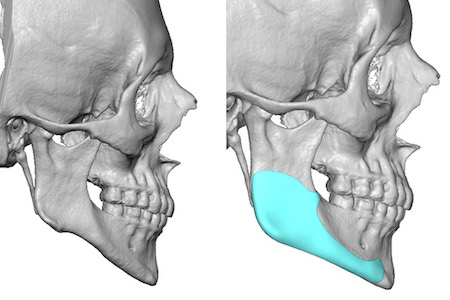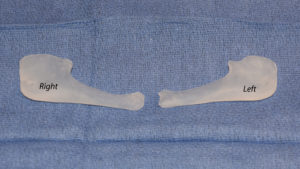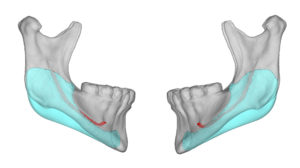Background: The shape of the lower jaw is influenced by a variety of genetic bone growth and postnatal musculoligamentous attachments. This is most evident in the high jaw angle patient who, by definition, has a steep mandibular plane angle. What is often noted in their 3D CT scans is the bony exostoses that exist along the jaw angles and a more pronounced antegonial notch.
The antegonial notch is a well known feature of the jawline that exists between the jaw angle and the mandibular body. Its presence and extent varies widely Its existence/purpose can be debated but its smooth and upwardly curved shape indicates this is where the masseter muscle is not. This can be confirmed surgically when placing custom jawline implants where the subperiosteal dissection is loosely attached and the fatty tissue beneath the jawline is easily seen.
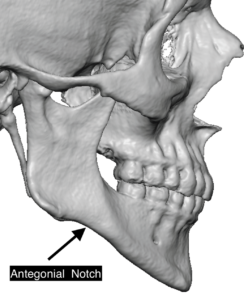
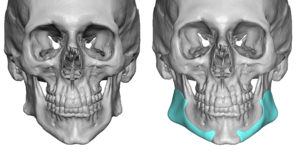
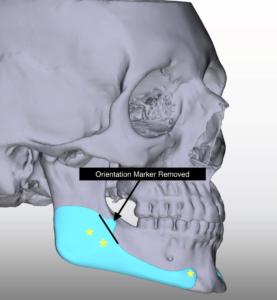

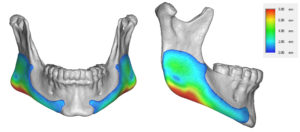
Case Highlights:
1) The high jaw angle patient has a steep mandibular plane angle which can be associated with a normal horizontal chin position.
2) A deep antegonial notch can be occasionally seen in the high jaw angle/steep mandibular plane angle patient.
3) A custom jaw angle implant design must concurrently lower the jaw angle, fill in the antegonial notch and create a smooth jawline up to the chin.
Dr. Barry Eppley
Indianapolis, Indiana

